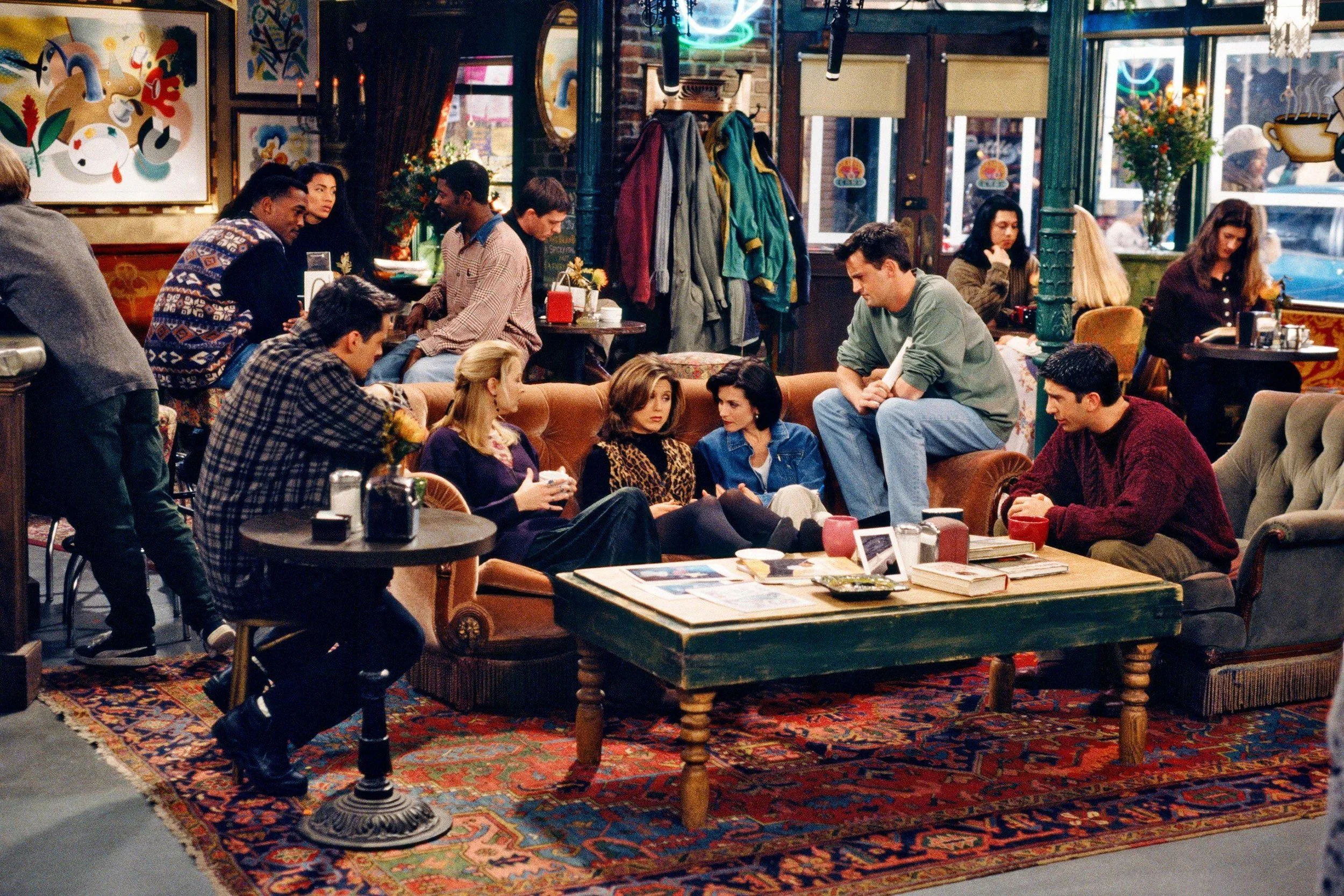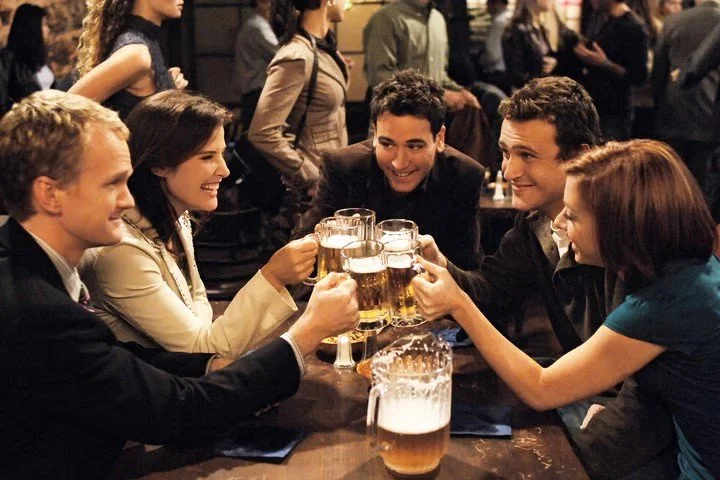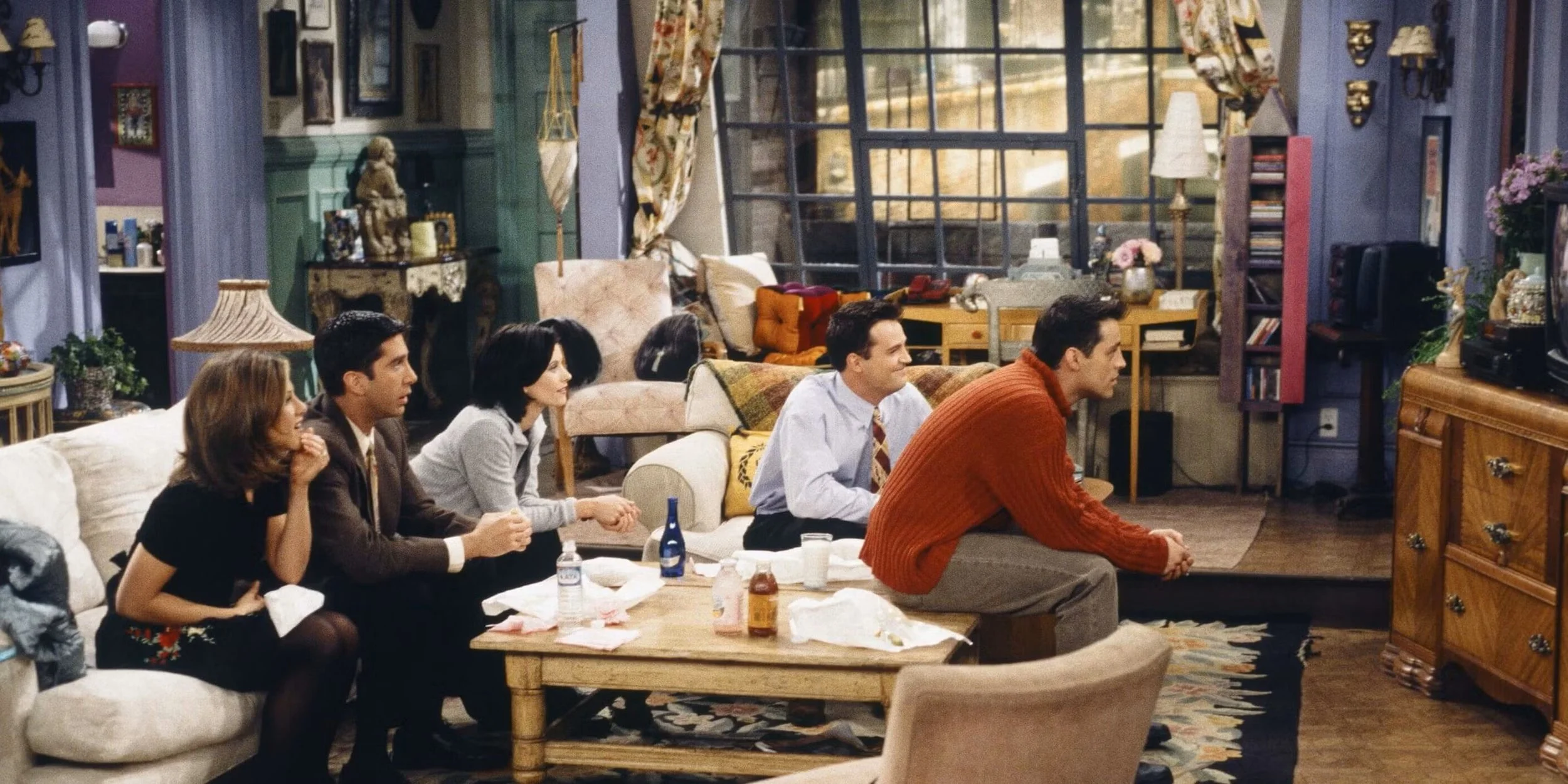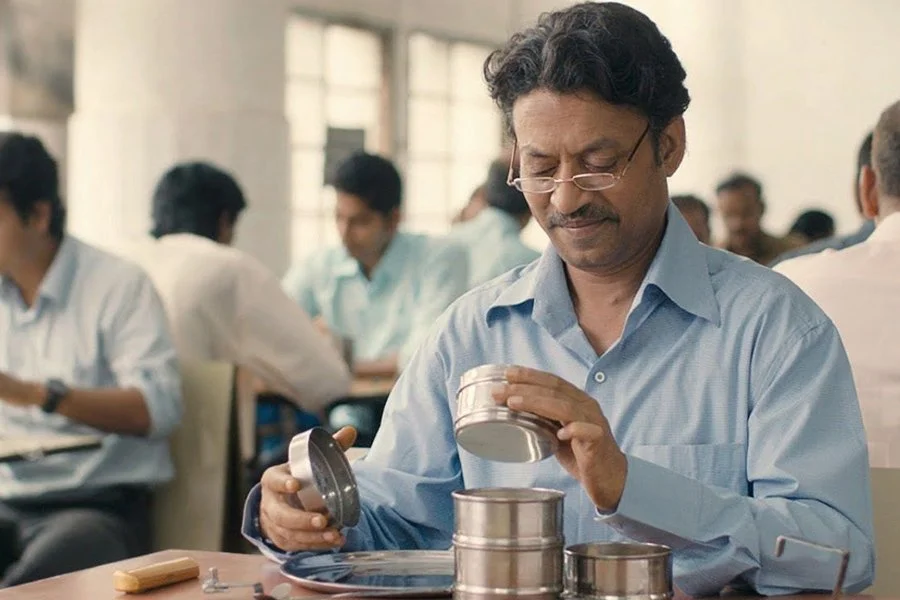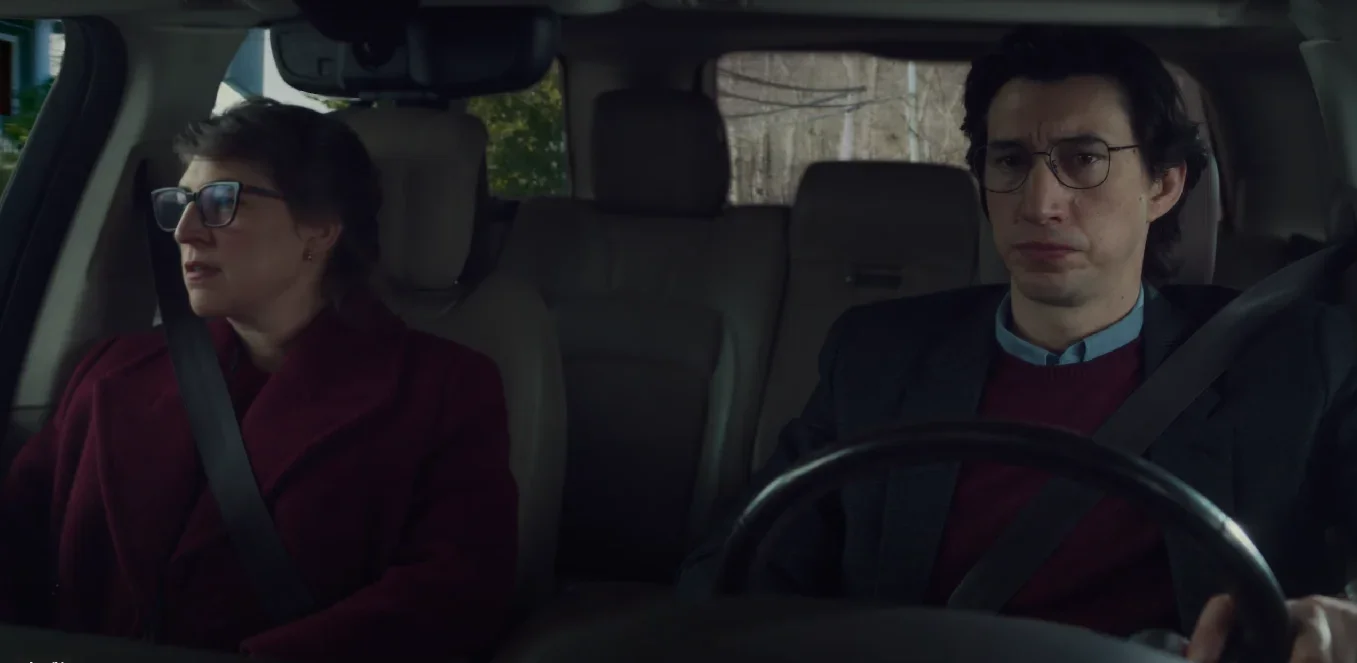The One with Why We Can’t Stop Watching Sitcoms
The One with Why We Can’t Stop Watching Sitcoms
Matt LeBlanc as Joey Tribbiani, Lisa Kudrow as Phoebe Buffay, Jennifer Aniston as Rachel Green, Courtney Cox as Monica Geller, Matthew Perry as Chandler Bing, David Schwimmer as Ross Geller | Still courtesy of Warner Bros.
I got to visit the FRIENDS Experience: The One in Manila recently. The FRIENDS Experience is an exhibit that brings together different props and costumes from the 1994 sitcom Friends, along with recreations of different iconic sets, such as the two character apartments and the Central Perk coffee shop.It was a birthday gift for my mum since we watched the show together when I was young. In fact, my kid self's choice of yellow leather for our old sofa was inspired by Chandler and Joey's in their apartment. It's a show that still brings me comfort, like a well-worn childhood blanket. The exhibit was fun despite the long lines. It also got me thinking about other people's safety blankets: sitcoms.
Despite the abundance of media available to us, sitcoms from the 90s and early 2000s still reign supreme. The world has changed so much for young people and even the way we live, but why are they still so relevant? Last year, Friends celebrated its 30th anniversary, but standing in line at the exhibit and seeing all the twentysomethings dressed in their inspired outfits, it struck me how much this sitcom and many others still have staying power, generations down the line. But what keeps us coming back time after time?
First, I think it's important to look at the context of the world that young people are living in. Unemployment and debt is at an all time high all over the world. In the Philippines alone, unemployment rates sit at 3.9 percent as of July 2025. Young people entering the job market often find that even if they are able to get jobs, the rate they are being paid is not enough to live on. And certainly not enough to get to do fun things often, whether that’s hobbies, going out to eat and clubbing. A house or living alone is often just a fantasy for many. Many are living paycheck to paycheck with little to no time to do anything else other than pass out when they get home.
This bleeds into the way young people have started to treat relationships. Whether that’s romantic, platonic or anything in between. There’s a danger of relationships feeling transactional because there’s simply not always enough time to cultivate them properly. Add social media into the mix, and you see people feeling resentful that their lives aren’t Instagram-worthy or having an increased fear of missing out. But at the same time, they no longer have the energy to do anything about it.
Contrast that with the world that sitcom characters often operate in. They go out and have coffee in cozy coffee shops and restaurants without ever worrying about splitting the check. They see their friends almost every day, or live with them in beautiful apartments. They often work only one job, and leave in the middle of the day to do other things. Sick days? They just call in and their boss approves their leave. They date beautiful people and have an unlimited wardrobe of beautiful clothes.
Julia Louis-Dreyfus as Elaine Benes, Jason Alexander as George Costanza, Michael Richards as Cosmo Kramer. Jerry Seinfield as Jerry Seinfield | Still courtesy of NBC
The sitcom is the fantasy of an ideal life. It’s a dream for many because it shows us how good life could be. Sitcoms often highlight how important community is in our everyday lives, but we are often prevented from strengthening and forming them because our society is not set up that way. The closest you’ll get to sitcom levels of seeing your friends everyday is when you’re still in high school or college- and so your fantasies are born, fueled by the TV you consume. It colors your view of adulthood, and when you finally get there… (And I’ve been through this and still am going through this!) life is a bit suckier than you thought.
In a weird way, I’ll Be There For You by The Rembrandts, the theme song to Friends, is the perfect encapsulation of the world of the sitcom vs. the reality of life as a young person. “So no one told you life was gonna be this way / Your job’s a joke, you’re broke, your love life’s D.O.A,” hits the nail on the head of the feeling you get when you’re in your 20s,working your first job, simultaneously loving the stability of income and mourning the lack of free time you have now.
So what can we do but turn to our TVs and streaming platforms to watch the life we want to be living? An interesting fact about sitcoms is that the popularity and demand for them increased once more in 2020. It was the year of the COVID-19 pandemic, and we were all trapped in our houses,unable to participate, and feeling disconnected more than ever. So people sought out both familiarity and community- and where else could one have found that other than in your favorite 90s/2000s sitcom?
Neil Patrick Harris as Barney Stinson, Colbie Smulders as Robin Scherbatsky, Josh Radnor as Ted Mosby, Jason Segel as Marshal Eriksen, Alyson Hannigan as Lily Aldrin | Still taken from Spoon University
Don’t get me wrong—sitcoms have their own share of flaws, especially the ones that we consider classics that are products of their era. I still cringe at the gay and fat jokes sprinkled throughout Friends, Seinfeld and How I Met Your Mother. These beloved shows are also very much white, straight, and cis. It’s not until the 2010s that sitcoms start to get more diverse in characters and the stories they portray.
But at the heart of why these shows are so beloved is the way they highlight human connection and love for each other. Past skin color, gender, or economic status, what people relate to are these characters’ desire to connect and take care of the relationships they have- something that is getting harder and harder to do in real life. We get so wrapped up in our own desires, we forget that even a simple "happy birthday” could make someone’s day when sitcoms often have whole episodes devoted to birthday party plots. Despite the absurdity of sitcom shenanigans at times, we watch sitcoms because they reflect our own desires. Our own fantasies of a life that is fun to live in.
Jennifer Aniston as Rachel Green, David Schwimmer as Ross Geller,, Courtney Cox as Monica Geller, Matthew Perry as Chandler Bing, Matt LeBlanc as Joey Tribbiani | Still taken from Screen Rant
As I stood looking at all the people waiting in line to take photos in Joey and Chandler’s apartment and Monica’s kitchen and the iconic purple door, I saw people united by a love for something. People offering to hold people’s place in line so they could go to the bathroom. People helping others get the perfect photo or Tiktok. People commiserating over how long the lines were taking, eager to see the props from the show. People laughing with their friends and family members.
Even though my feet ached, I came away from the exhibit with a newfound wonder and appreciation for the show that had brought us there. Marta Kauffman and David Crane, the show’s creators’ pitch for Friends then titled Insomnia Cafe was a simple one: “This show is about six people in their twenties who hang out at this coffee house. It’s about sex, love, relationships, careers… a time in your life when everything is possible, which is really exciting and really scary.” And that birthed a show that has been adored and loved long after it was off the air. Because it was about people, living their lives. A little shinier and with better clothes than ours, sure- but one that we could still see ourselves in, reflected on the black screen of our TV sets and devices.



